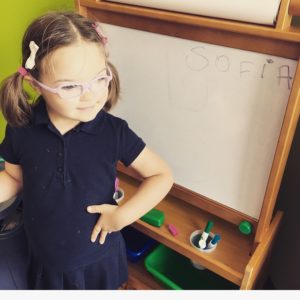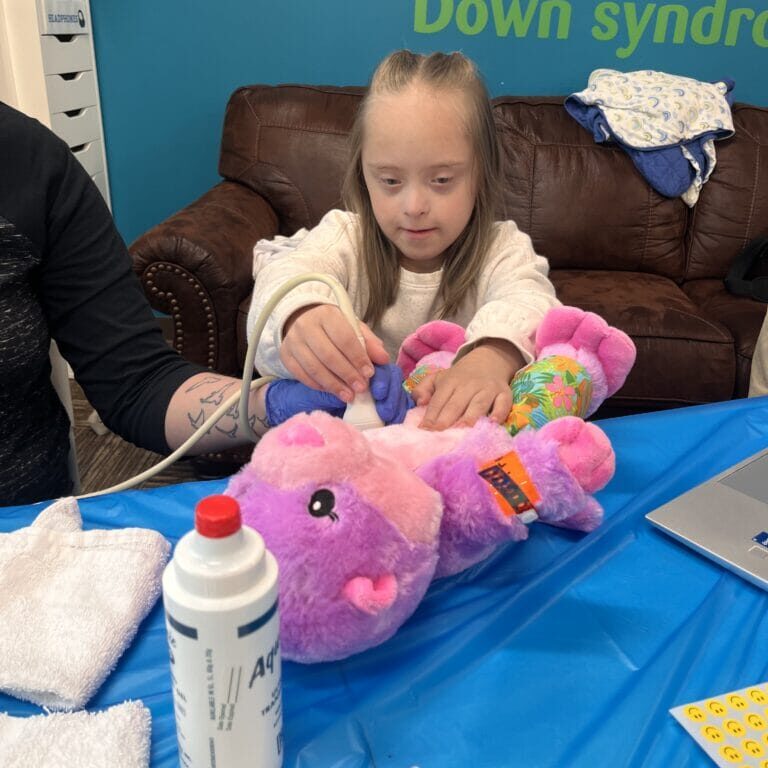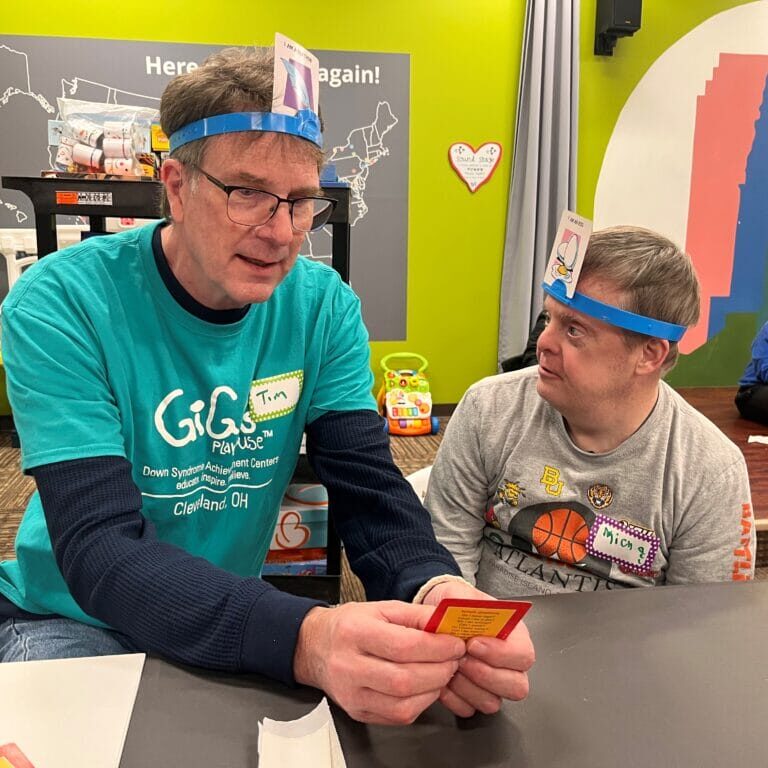understanding the learner with Down syndrome
 Sofia here has made amazing strides since coming to GiGi’s Playhouse back in January. We love her determination! Sofia was a part of our pilot literacy program over the summer and we have heard great things from her literacy tutor, Ann. She just started kindergarten today and is writing her name like a pro! Keep up the excellent work, Sofia!
Sofia here has made amazing strides since coming to GiGi’s Playhouse back in January. We love her determination! Sofia was a part of our pilot literacy program over the summer and we have heard great things from her literacy tutor, Ann. She just started kindergarten today and is writing her name like a pro! Keep up the excellent work, Sofia!
With our children heading back into the classroom, this blog post seems timely. Here’s to a wonderful school year for all of our participants!
Children with Down syndrome are capable learners who are excited and eager to learn. They just need to be given the opportunity to excel. They may learn at a slower pace, but are more than capable of learning. They are strong visual learners. This means that they understand what they see better than what they hear.
Children with Down syndrome have specific points associated with their learning development:
1. They are visual learners.
2. They understand a lot more than they can say.
3. They are able to follow classroom rules and routines.
4. They need help to remember instructions – use shorter phrases or visual clues.
5. Teacher’s expectations of behavior, attitude and ability should be high.
6. Children with Down syndrome can learn. However, we need to make compromises so that their educational needs can be met in the classroom. Since they are visual learners, teaching reading to students with Down syndrome should be characterized by a strong emphasis on visual learning. Visual demonstrations, pictures and illustrations can also be successfully used to assist in providing effective instruction in other subject areas of the curriculum. Lessons in phonics should be included in the curriculum for the learner with Down syndrome.
The use of manipulatives can be beneficial in the development of number concepts. The use of physical demonstrations and activities are important when teaching math concepts.
Students with Down syndrome generally demonstrate good social skills, which can be utilized to increase learning and teaching opportunities. When speaking to a student with Down syndrome, it is important to speak directly to them using clear language and short sentences. You should allow adequate time for the child to process what you have said and respond. Positive reinforcements should be used for students with Down syndrome to boost their self-esteem and positive learning experience. This should be done both at home and school.
Recent Posts



